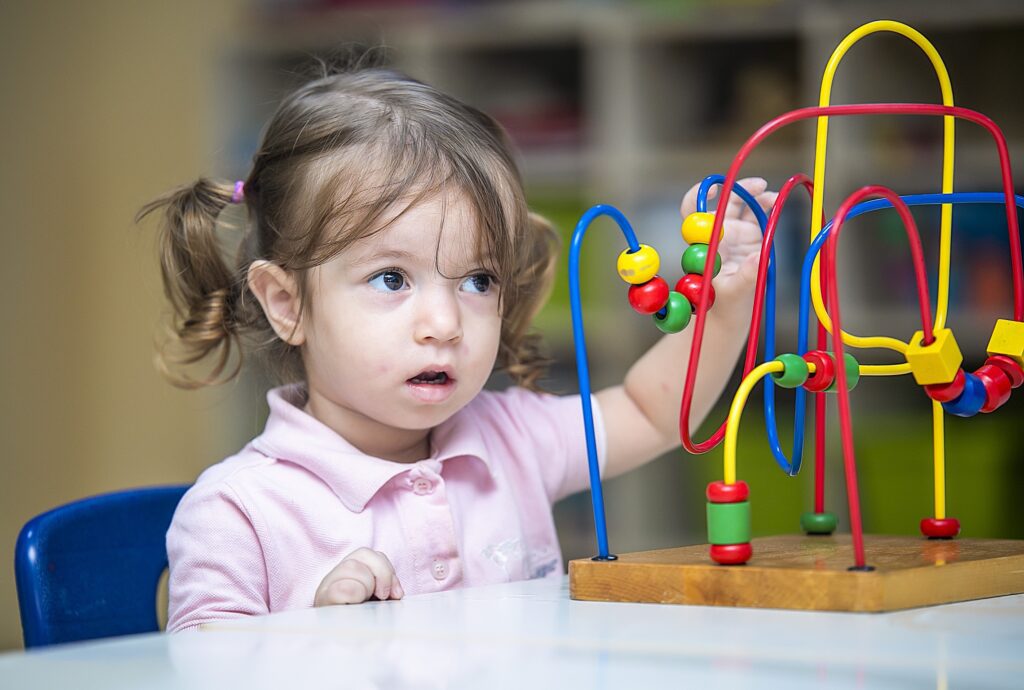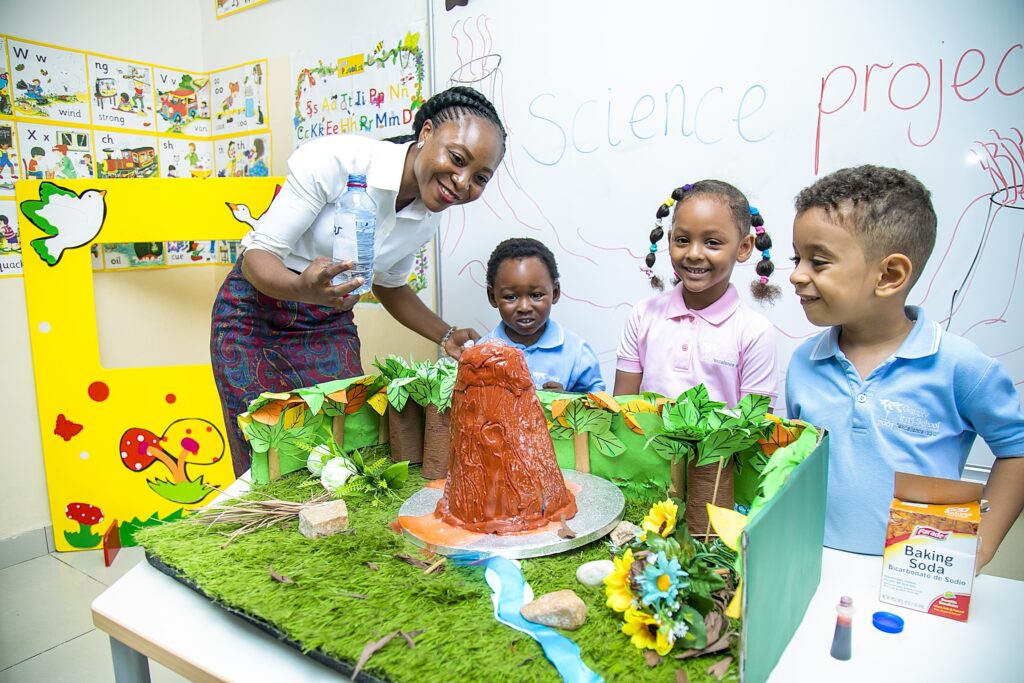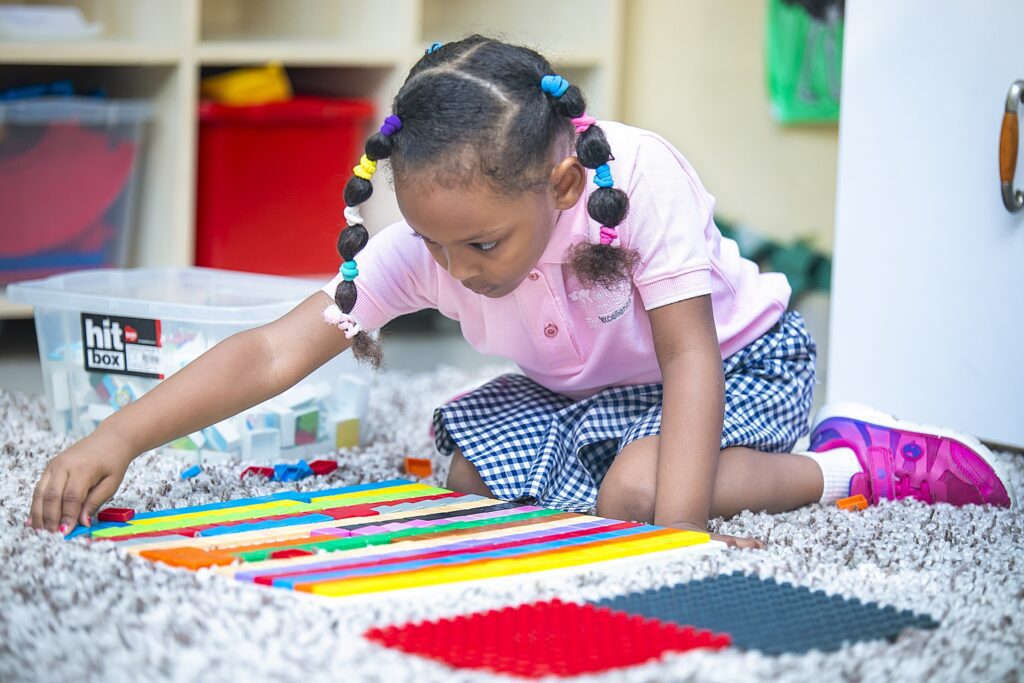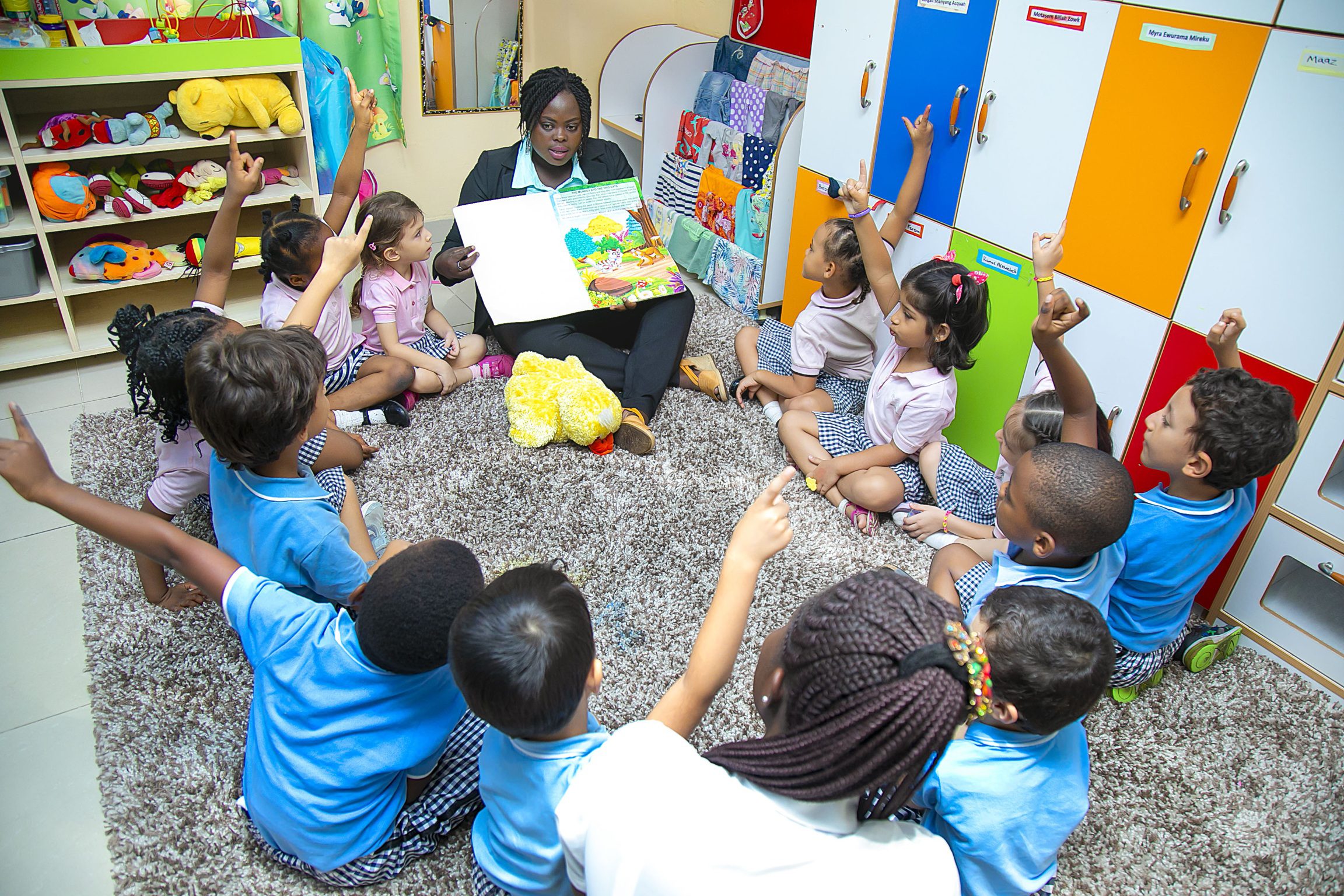ENGLISH
Galaxy Preschool Section uses the Jolly Phonics approach for English lessons and the International Early Years Curriculum for thematic units for all classes. It supports learners with Oxford Math books, which align with the British National Curriculum. Science, Character Education, Art, Motor Skills, and Storytime are also part of the Preschool Section’s curriculum.
Jolly Phonics is a comprehensive programme based on the proven, fun and multi-sensory synthetic phonics method that gets children reading and writing from an early age; we teach letter sounds instead of the alphabet. These 42 letter sounds are phonic building blocks that children use with the right tools to decode English. When reading a word, they recognise the letters and blend the respective sounds; when writing a word, they identify the sounds and write down the corresponding letters. These skills are called blending and segmenting. These are two of the five skills that children need to master phonics:
- Learning the letter sounds:
Children are taught 42 letter sounds, a mix of alphabet sounds (1 sound – 1 letter) and digraphs (1 sound – 2 letters) such as sh, th, ai and ue. We use a multi-sensory approach to introduce each letter sound with fun actions, stories, and songs.
We teach the letter sounds in 7 groups of 6 letters at a pace of 4-5 sounds a week. Children can start reading after the first group of letters has been taught and should have been introduced to all the 42 letter sounds after 9 weeks at school.
- Learning letter formation:
This is taught alongside the introduction of each letter sound. Typically, children will learn how to form and write letters during the lesson.
- Blending:
Once the first few letter sounds are learned, children blend them to help them read and write new words.
- Segmenting:
When children start reading words, they must also identify the phonics that make the word sound like it does. By teaching blending and segmenting, children become familiar with assembling and breaking down the sounds within words.
- Tricky words:
These are words with irregular parts, such as ‘who’ and ‘I’. Children learn these as exceptions to the rules of phonics. Introducing the common tricky words early in the year increases reading fluency (as they frequently occur in those first simple sentences you might expect them to read).
MATHEMATICS
The principal focus of Galaxy Preschool in mathematics is to ensure that pupils develop confidence and mental fluency with whole numbers, counting and place value; it involves working with numerals, words and the four operations, including practical resources (for example, concrete objects and measuring tools)
At this stage, pupils should develop their ability to recognise, describe, draw, compare and sort different shapes and use the related vocabulary. Teaching should also involve using various measures to describe and compare quantities such as length, mass, capacity/volume, time and money.
By the end of reception 2, pupils understand place value and number recognition. An emphasis on practice at this early stage will aid fluency.
Pupils should read and spell mathematical vocabulary at a level consistent with their increasing word reading and spelling knowledge.
INTERNATIONAL EARLY YEARS CURRICULUM (IEYC)
We focus on a learning process rather than solely on learning outcomes to drive a child’s development. Our IEYC learning process captures children’s natural curiosity as a starting point and balances child-initiated and teacher-scaffolded provision within an enabling environment.

MOTOR SKILLS
Galaxy Preschool’s Motor skills curriculum is designed to promote the development of fine and gross motor skills in young children. It focuses on activities and exercises that enhance physical coordination and control. In a fine motor skills component, preschoolers engage in activities like drawing, cutting, and finger painting to refine hand-eye coordination and dexterity. In the gross motor skills segment, they participate in running, jumping, and climbing activities to develop balance, strength, and spatial awareness.
The curriculum is typically structured to be fun and play-based, ensuring that children enjoy the learning process. It also encourages the development of fundamental skills like hand strength, bilateral coordination, and body control, which are crucial for a child’s physical and cognitive development. A preschool motor skills curriculum helps young children build the foundational physical abilities for daily tasks and future learning.

SCIENCE
Galaxy Preschool’s science curriculum is designed to introduce young children to the wonders of the natural world in a fun and engaging way. It typically focuses on hands-on, experiential learning and encourages curiosity and exploration. The curriculum may cover various science topics, such as basic biology, astronomy, physics, and environmental science. Activities often include observing and categorising objects, exploring basic scientific concepts through simple experiments, and learning about the environment and animals. The curriculum is tailored to preschoolers’ developmental needs and interests, promoting their cognitive and motor skills while fostering a love for science and an early understanding of how the world works.

CHARACTER EDUCATION
Galaxy Preschool’s character education lesson aims to instil positive values and traits in young children to help them develop into responsible and respectful individuals. These lessons typically teach essential values such as honesty, kindness, empathy, sharing, and good manners. Through stories, role-playing, and interactive activities, preschoolers learn about these values in a relatable and age-appropriate manner. The goal is to help children understand the importance of being good citizens and building strong peer relationships. Character education lessons also encourage the development of social and emotional skills, fostering a foundation for ethical behaviour and personal growth.

STORYTIME
Galaxy Preschool’s storytime curriculum promotes early literacy and a love for reading among young children. Here’s a summary of what it typically includes:
- Reading Aloud:
– Librarians or teachers read age-appropriate books to the children, using engaging voices and expressions.
– Various books are featured, including picture, rhyming, and non-fiction.
- Story Selection:
– Stories are carefully chosen to captivate children’s interests and stimulate their imagination.
– Themes may vary, covering friendship, animals, seasons, and more.
- Interactive Activities:
– Incorporating songs, fingerplays, and rhymes related to the story.
– Encouraging children to participate in the reading experience by answering questions or making predictions.
- Literacy Skills:
– Promoting early literacy skills such as recognising letters and sounds, comprehension, and vocabulary development.
– Highlighting sight words or letter sounds that relate to the stories.
- Book Exploration:
– Encouraging children to interact with books, turn pages, and discuss the book’s illustrations.
– Showing how books work, including front and back covers, title pages, and reading from left to right.
- Craft or Art Activities:
– Connect the story with creative activities like colouring, drawing, or crafting.
– Enhancing comprehension and imagination through hands-on projects.
- Cultural and Diversity:
– Introducing stories from various cultures, backgrounds, and perspectives to promote diversity and inclusion.
- Special Guests:
– Occasionally inviting guest speakers, authors, or illustrators to share their work and interact with the children.
- Regular Schedule:
– Consistency is key, with regular story time sessions to establish a routine for young learners.
- Parental Involvement:
– Encouraging parents to attend and participate with their children, fostering family reading habits.
The primary goal of a preschool storytime curriculum is to make reading fun, engaging, and educational while also preparing children for a lifelong love of books and literacy.

ART
Galaxy Preschool’s Arts curriculum is a developmentally appropriate program that caters to all areas of a child’s development: physical, emotional, social, and cognitive1. It is designed to promote a positive self-image, sensory awareness, growing independence, and an eagerness to learn.
Art activities are important as they encourage each child’s “full and all-sided development”. They help children develop their cognitive, social, and motor abilities. Young children feel a sense of emotional satisfaction when they are involved in making art. This satisfaction comes from children’s control over the materials they use and their autonomy in their decisions. Making art also builds children’s self-esteem by allowing them to express their thoughts and feelings.
For very young children, making art is a sensory exploration activity. They enjoy the feeling of a crayon moving across the paper and seeing a blob of coloured paint grow larger. Activities centred around making art also require children to make decisions and self-evaluate.
The curriculum includes academic concepts of literacy and maths, such as counting, colouring, and letter recognition, and developing large and fine motor skills, such as walking in a line and using a pencil. It also includes social and school-readiness skills, such as making friends, sharing, and taking turns.





